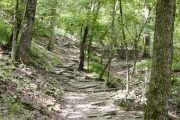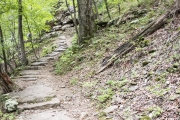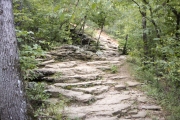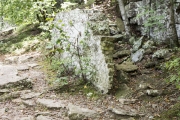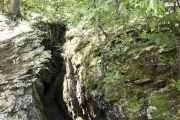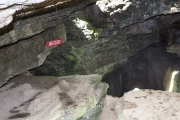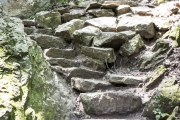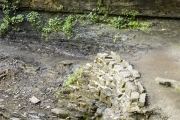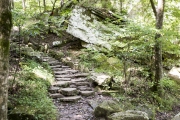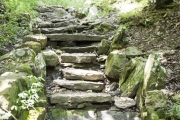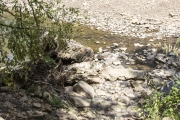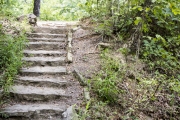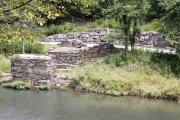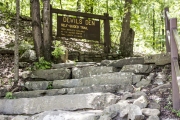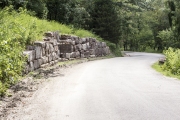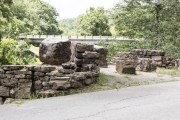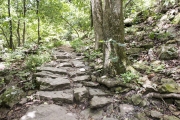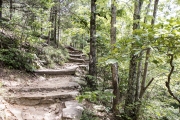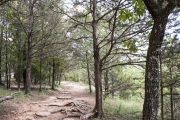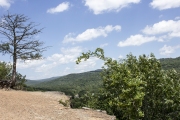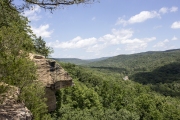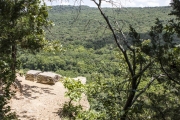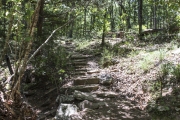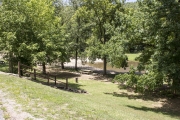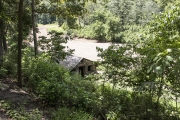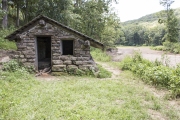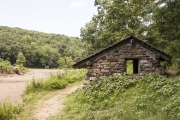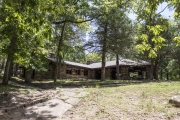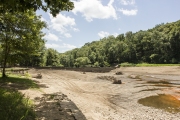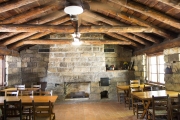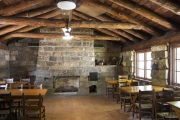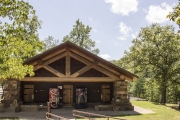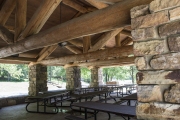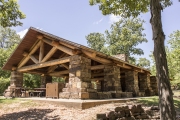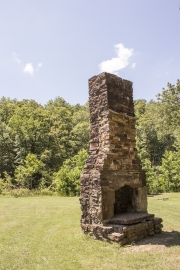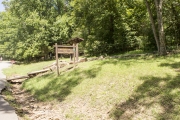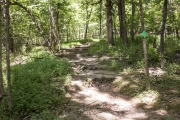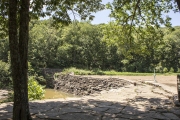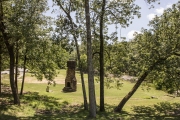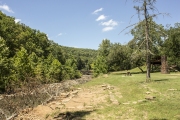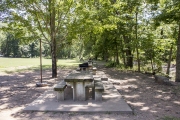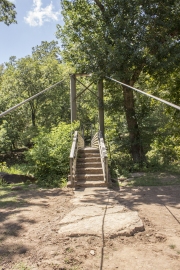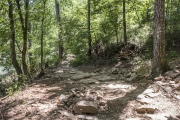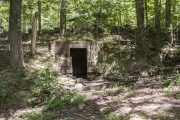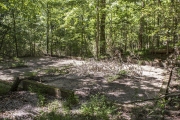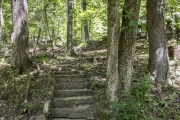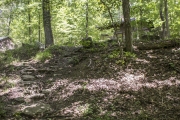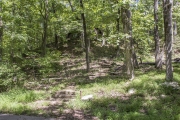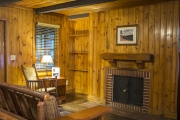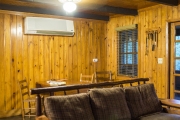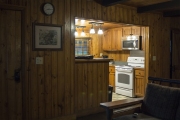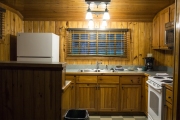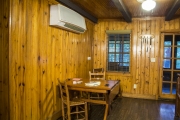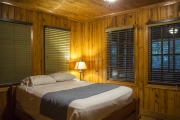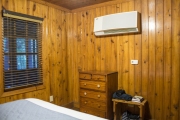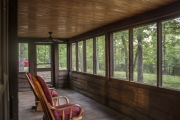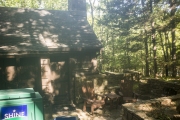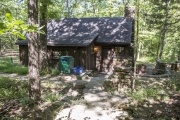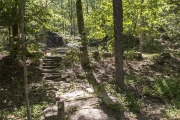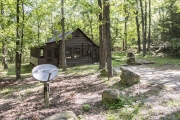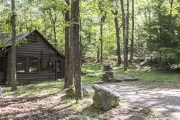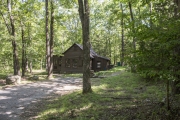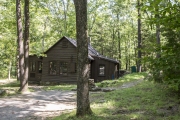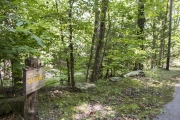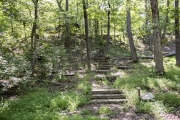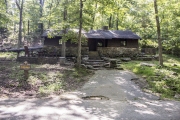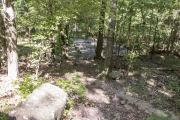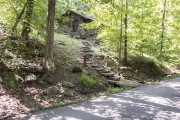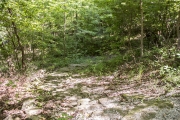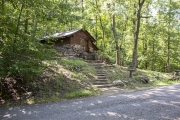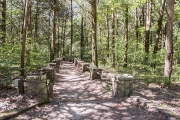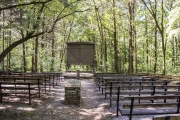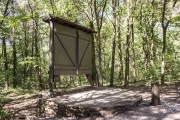Devil's Den
By Jamie Middleton, student, Master's of Public History at UA at Little Rock
Visited on: 7/18/2019
I have been to Devil’s Den several times while I was going to the University of Arkansas, but I had never paid close attention to the workmanship of the trails or even the broader context from which the park had been created. This time I had gone for a night’s stay in one of the park’s cabins and to delve into more of the CCC aspects of the park. Right before I had made my drive up there I had finished scanning transcripts for an interview with Paul Young, one of the architects of the park during its CCC days, which was incredibly helpful in gaining my bearings and having some ideas of things to be on the watch for during my visit.
My check-in time was at 4 pm, so I went up the night before so I could have a full day walking the trails before it was time to check-in. I went into the Visitor’s Center when I arrived around 10:30 that Thursday morning to pick up some maps and informational guides. Ellen, one of the rangers there that day, gave me some direction telling me about the Devil’s Den Trail and the CCC Interpretive Trail being good places for me to check out.
The Devil’s Den Trailhead was just behind the Visitor’s Center and was in a pretty central location, so I just left my car in the parking lot and set off on the trail. This trail was probably where I saw the most people during my entire visit. I was taking pictures of some of the stonework on the trails and I had a couple of older women and kids ask me what on earth I was doing. After explaining the little bit I had learned about the CCC and their history at this park, the people I talked to were intrigued since they hadn’t thought about that aspect like I hadn’t before this visit.
After this trail, I walked across the highway bridge to the Yellow Rock Trailhead and made my way on out to the overlook. It was there that I felt how impressive this entire project was and its legacy today. Maybe it was because I was the only person crazy enough to hike at 1 o’clock in the afternoon on an Arkansas summer day or that it was a Thursday, but I never saw another person the entire time I was on this trail. It was peaceful and provided the space to appreciate the work that went into creating the trail, how seamlessly the stonework and trail itself fits in throughout the landscape. Devil’s Den is credited as one of the most intact CCC camps, and standing there on that overlook I couldn’t fathom how they made all of it happen. I sat there and ate my lunch looking out to the miles upon miles of the Boston Mountains thinking about not only those CCC men who had the foresight to create a trail to this spot but also of those initial settlers who had been living out here long before.
I made my way back down the mountain taking in the entirety of the experience, and I thought about the oral histories I had listened to about different men’s experiences at their camps. I thought of this as I made my way into where most of the camp buildings were repurposed or no longer existed. I stopped in the gift shop in the Pavillion/Bathhouse to grab a drink, and I learned that back in the CCC days that pavilion was sometimes used to hold local dances. It was an interesting juxtaposition of that to the school group running around for their day trip to the park. After that, I walked across the dam and down to the second pavilion and remnants of the CCC Recreation Hall and Education Building. By the time I had walked myself back up the hill through part of the CCC Interpretive Trail, it was time to check into my cabin.
Tim Scott, the Assistant Superintendent of the park, happened to be the one who was helping me with the check-in process and was just a wealth of information. I had asked him about a building I had seen along the creek but there wasn’t a sign as to what it was. He informed me it was the old well house, and then he asked me about my experience and what happened to bring me to the park that day. Hearing that I was helping do a project about the CCC in Arkansas the floodgates opened about the park’s history. This is when everything I had seen started to come together- both the foot-bridge and vehicular bridge were at one time washed away by a flood, the dam had been raised in the 1960s after the flood, the furniture in the cafe and much of the furniture in the cabins were all original from the CCC, and that the park itself had its own collection of CCC oral histories, photos, and letters obtained by rangers over the years.
Almost overwhelmed by the influx of information I went down to my cabin, Cabin 12, to unwind and journal about my day before I forgot everything I learned. Cabin 12 was tranquil and homey. It had all the modern amenities, but my favorite aspects were the gliders on the screened-in porch and the lack of cell service. After a quick shower and nap following my 12 mile hike day, I had a relaxing evening with a little music, cards, reading, and a cheeseboard. I ended my day watching the sunset from my porch and began the next with a hot cup of coffee watching it come back up. Overall the trip was enlightening, putting together the oral histories and photographs I had been working with and seeing it first hand, as well as for some personal self-reflection away from the hustle and bustle of everyday life.
If you'd like to visit Devil's Den State Park and even stay in a CCC-built cabin, visit the Arkansas State Parks site to learn more.


